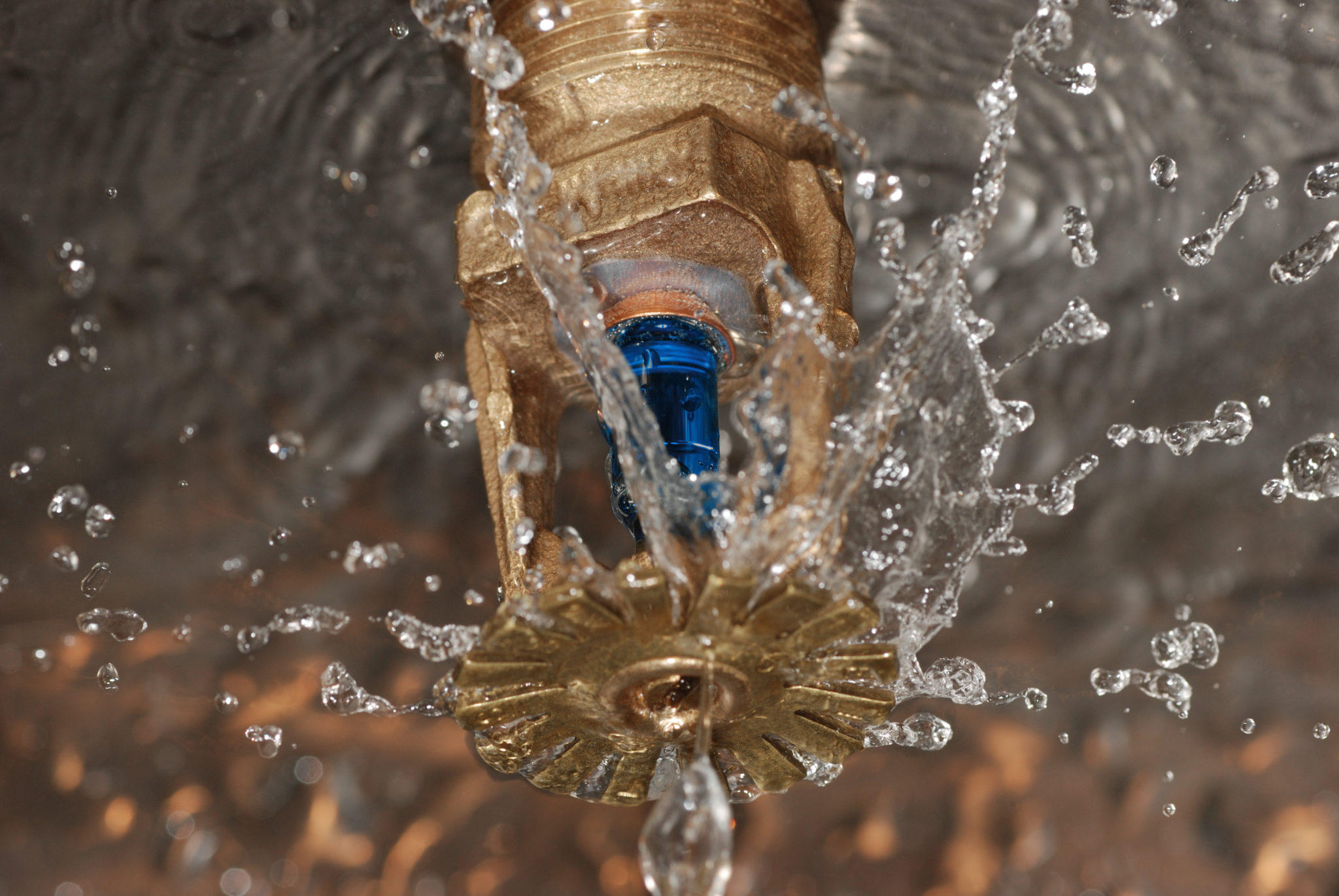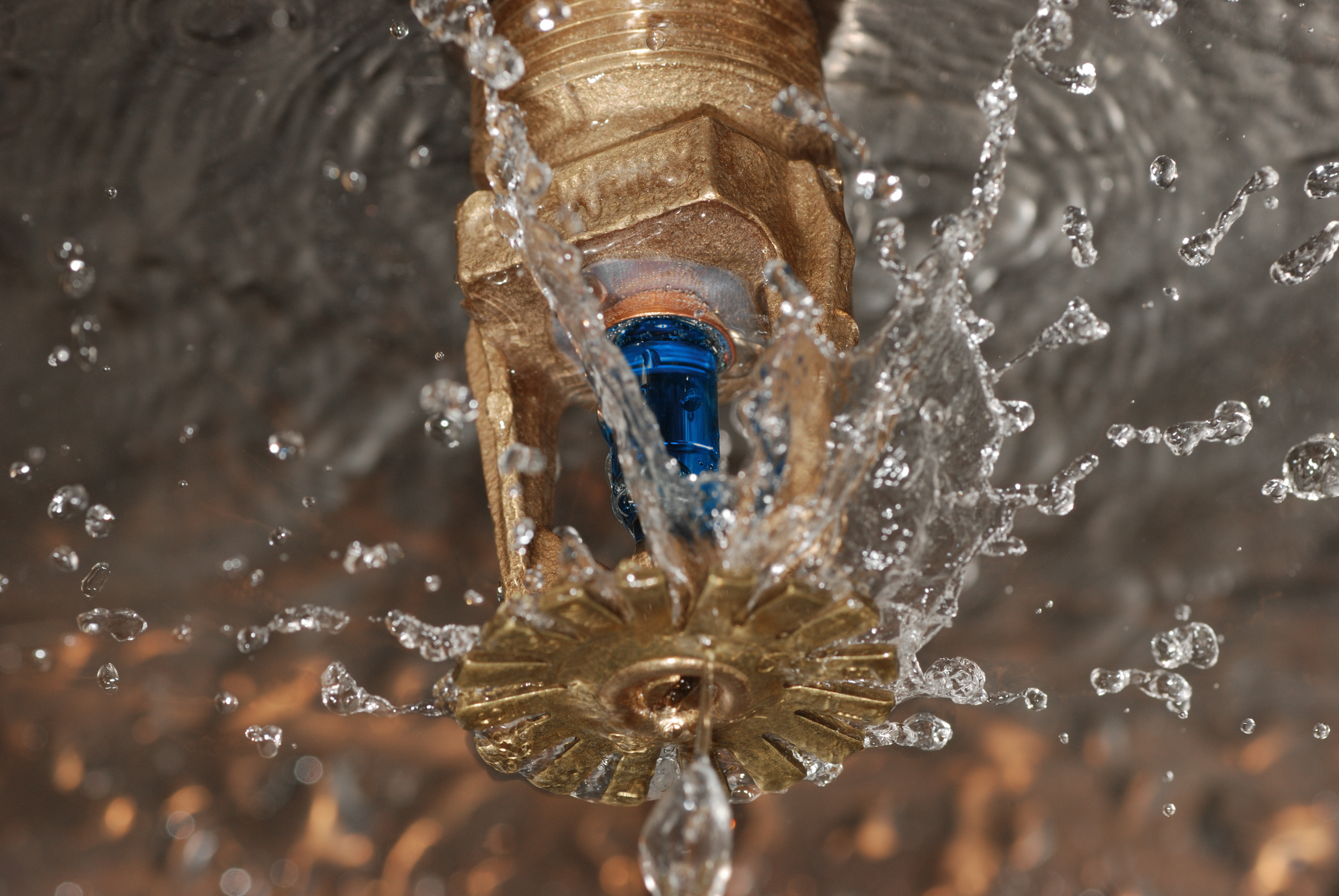
 In the Part 1 of Choosing the Right Fire Sprinkler, we reviewed sprinkler basics, temperature ratings, and K-factor. In Part 2, we’ll look at installation orientation, response type, design and performance characteristics, and special service conditions.
In the Part 1 of Choosing the Right Fire Sprinkler, we reviewed sprinkler basics, temperature ratings, and K-factor. In Part 2, we’ll look at installation orientation, response type, design and performance characteristics, and special service conditions.
Installation Orientation
Generally, sprinklers are manufactured for installation in five basic orientations: upright, pendent, horizontal sidewall, recessed, and concealed.
Upright sprinklers are installed with the deflector above the frame so that water flows upward from the orifice opening, striking the deflector to create an umbrella spray pattern.
Pendent sprinklers are installed with the deflector below the frame so water flows downward from the orifice opening, striking the deflector to create an umbrella spray pattern.
Horizontal Sidewall sprinklers are installed on the wall near the ceiling. The deflector is oriented parallel with the roof/ceiling and provides an outward water spray pattern in a quarter spherical pattern.
Recessed Sprinklers are installed with all or part of the body mounted with in a recessed housing.
Concealed sprinklers are installed with the entire body mounted within a recessed housing with a cover plate to conceal the sprinkler.
Response Type (Thermal Sensitivity)
There are generally two thermal sensitivities (fast and standard) that measure the rapidity with which the thermal element operates once the air around the sprinkler has reached the operating temperature of the sprinkler. This is a measure of the thermal lag of the operating element.
Fast Response Thermal Elements have a Response Time Index (RTI) of 50 (meters-seconds1/2) per NFPA 13 (2016) Section 3.6.1(a). Residential sprinklers, Quick Response (QR) sprinklers, and Early Suppression Fast Response (ESFR) sprinklers all have fast-response thermal elements.
Standard Response Thermal Elements have a RTI of 80 (meters-seconds)1/2 per NFPA 13 (2016) Section 3.6.1(b).
Design and Performance Characteristics
Sprinklers are also categorized according to their design and performance characteristics.
Spray sprinklers can provide fire control for a wide range of fire hazards.
Control-Mode Density/Area (CDMA) sprinklers are a type of spray sprinkler intended to provide control of fires in a wide range of hazard types and configurations using design density/area criteria.
Control-Mode Specific Application (CMSA) sprinklers are a type of spray sprinkler that can produce characteristically large water droplets and can provide fire control for specific high-challenge fire hazards.
Early Suppression Fast-Response (ESFR) sprinklers are a type of quick-response sprinkler that has a fast-response thermal element with an RTI of 50 (meters-seconds)1/2 or less and can provide fire suppression for specific high-challenge fire hazards.
Extended Coverage Sprinklers are a type of spray sprinkler with larger maximum coverage area and spacing limitations than standard coverage sprinklers.
Open sprinklers are sprinklers that do not have a thermal element that covers the orifice. These sprinklers are used in deluge systems.
Quick-Response (QR) sprinklers are a type of spray sprinkler that have a fast-response thermal element with an RTI of 50 (meters-seconds)1/2 or less and listed as a quick-response sprinkler for its intended use.
Residential sprinklers are a type of quick-response sprinkler that have a fast-response thermal element with an RTI of 50 (meters-seconds)1/2 or less, and have been specifically investigated for their ability to enhance survivability in the room of fire origin, and are listed for use in the protection of dwelling units.
Special Service Conditions
Finally, sprinklers can also be classified by the special service conditions they are designed to serve.
Corrosion-Resistant sprinklers are fabricated with corrosion-resistant materials, or with special coatings or plating, to be used in an atmosphere that would normally corrode ordinary sprinklers.
Dry sprinklers have an extension nipple that has a seal at the inlet end to prevent water from entering the nipple until the sprinkler operates, to be used in hazard areas that are subject to freezing.
Intermediate Level/In-Rack Storage sprinklers are equipped with an integral shield to protect the thermal element from discharge of adjacent sprinklers installed at higher elevations.
Summary
NFPA 13 and FMDS 2-0, 3-26, and 8-9 specify the maximum and minimum coverage area and spacing for sprinklers, depending on the occupancy classification, the ceiling height, the type of system (wet or dry), the K-factor, the orientation, coverage type, and response type.
It is easy to see that sprinklers no longer come in a one-size-fits-all configuration like the original standard spray sprinkler that first came to market in the early 1950s. Choosing the right sprinkler is a complex process with many factors and characteristics that must be considered to get it right. In our next post, we will look at the inspection, testing, and maintenance of fire sprinklers.
References:
NFPA 25 (2107)- Standard for the Inspection, Testing, and Maintenance of Water-Based Fire Protection Systems
NFPA 13 (2016) Standard for the Installation of Sprinkler Systems
FM Data Sheet 8-9 Storage of Class 1, 2, 3, 4, and Plastic Commodities
FM Data Sheet 3-26 Fire Protection Water Demand for Non-Storage Sprinklered Properties
FM Data Sheet 2-0 Installation Guidelines for Automatic Sprinklers

